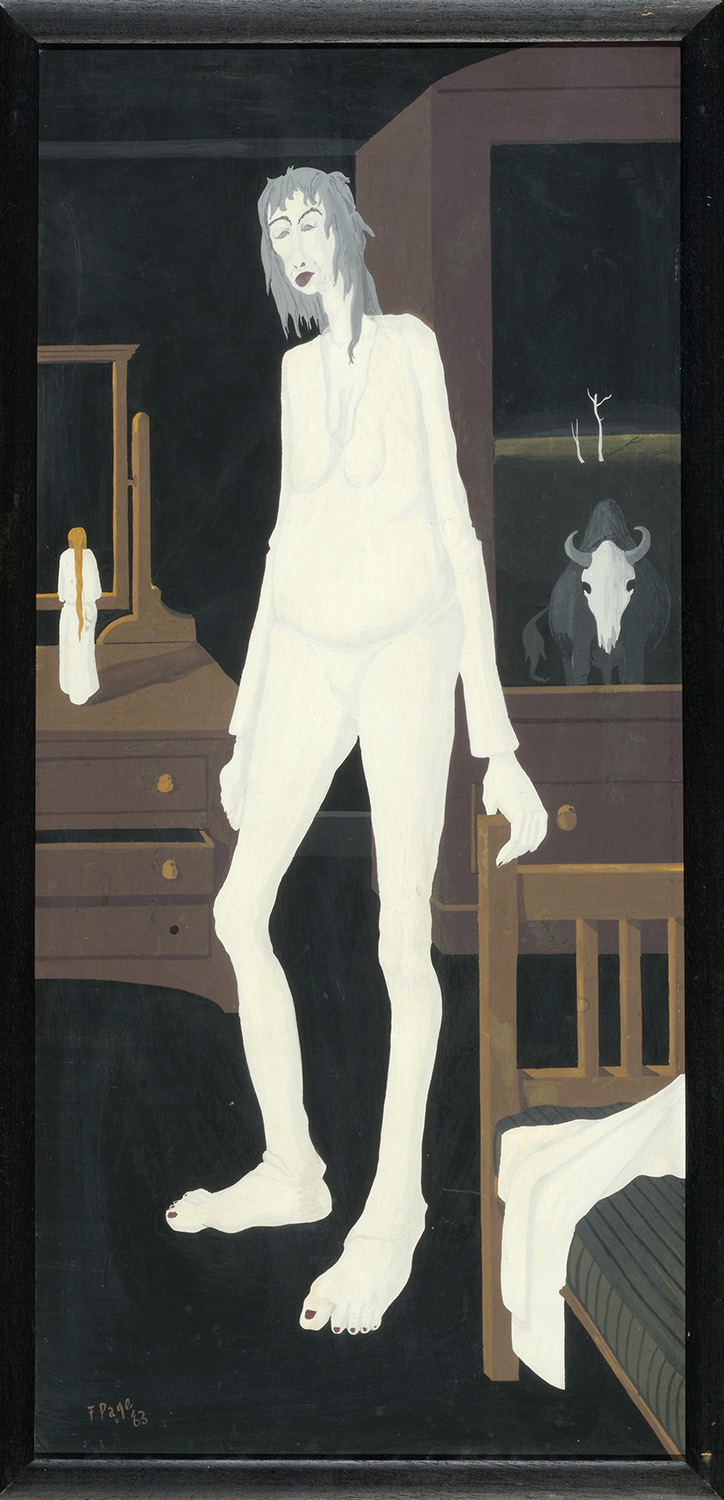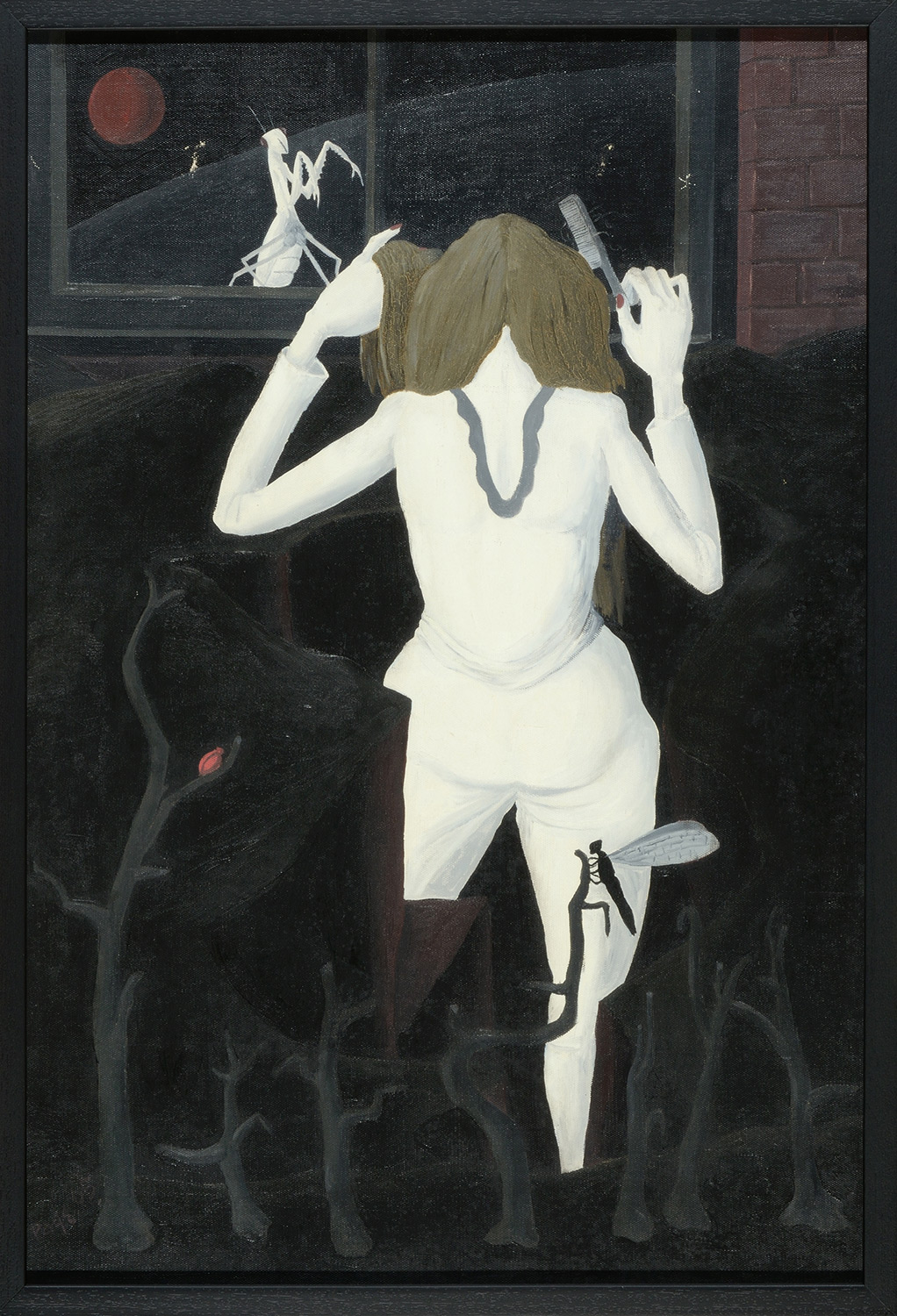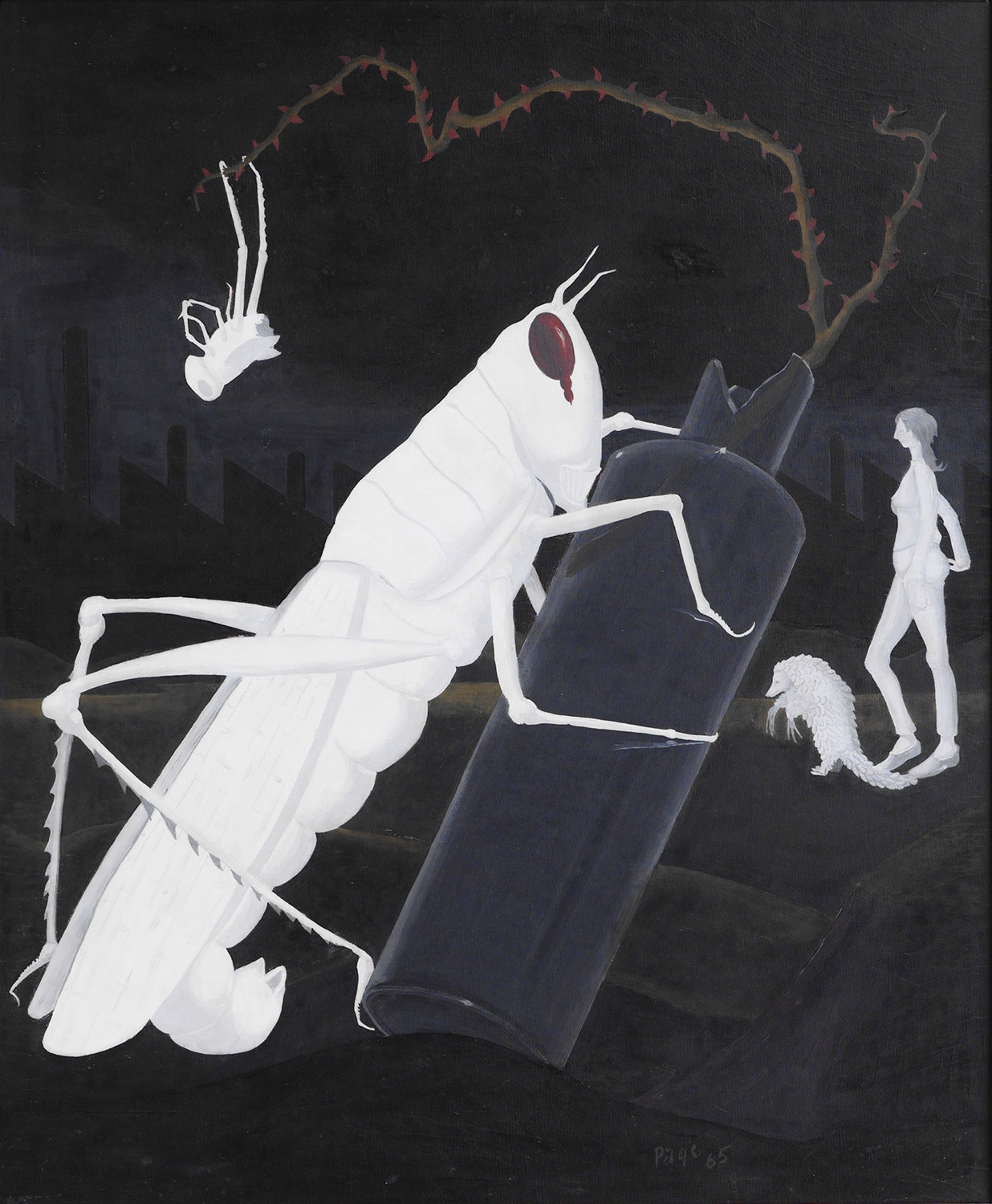‘Fred’ Fredrick Hutchison PAGE (1908 – 1984)
BIOGRAPHY
Frederick Hutchison Page is acknowledged as one of South Africa’s foremost Surrealist painters.
Page is best-known for his eerie images which, according to one critic, have earned him the reputation as a ‘Hitchcock among painters’. The reduced colour range in his work and use of either tempera or acrylic can be attributed to the dire financial circumstances he often faced. Page’s early life was unsettled. Born in Utrecht, Natal (now KwaZulu-Natal), he lost his mother when he was ten, and was passed from relative to relative, even spending some time in an orphanage in Dundee.
As a young adult, Page moved from one job to another (shepherd, gold-miner, barman) and spent some time in the military. He first arrived in Port Elizabeth (now Gqeberha), the city with which his art is now synonymous, to work in a tyre factory in 1937. And was later to become one of the few painters of the 20th century, to portray, with some accuracy, the particular architectural features of the city in which he lived. Reclusive by choice, he lived in an area called Central, close to the city’s harbour, where most of the material he used for the images was gleaned from sketches and photographs.
During the Second World War, Page served in the Signal Corps. It was only after the war ended in 1945 that he decided to become an artist.
Apart from a brief formative sojourn at Port Elizabeth Art School on an ex-serviceman’s grant (1946 – 1947), he was largely self-educated. He read widely and the Gothic and phantasmagorical influence of writers like Charles Dickens, Lewis Carroll and Edgar Allan Poe can be sensed in his paintings. He was also an avid reader of science fiction, especially Sheridan le Fanu and HP Lovecraft.
Most of Page’s paintings feature spaces defined by architecture. When figures occur, their presence serves to enhance the intended sense of oddness and disquiet. Page’s world is the world of the surreal, inhabited by characters evolved from his observation of life on the streets and from niches in his background. His images are laced with mordant wit, a sense of the ridiculous and an encompassing sense of the enigmatic tragedies of life.
Page began exhibiting his work with the Eastern Province Society of Arts and Crafts from 1948. But it wasn’t until 1960 that he had his first solo exhibition. This was followed by many others.
Although his work is held in some major institutional collections, the bulk of his oeuvre is held by private collectors. After his death, his memorabilia and many of his works were lodged with the Nelson Mandela Municipal Art Museum in Port Elizabeth (now Gqeberha).




